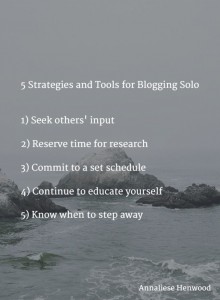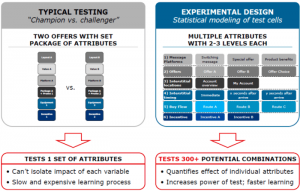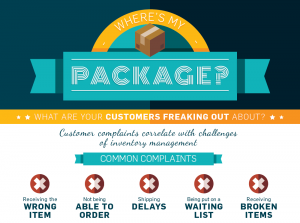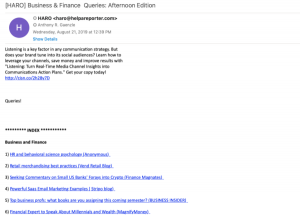Sales and marketing have entered a vicious cycle of “more is better” without considering performance. Here’s how to break it.
In 1961, the novel “Catch-22,” by Joseph Heller was published and its title immediately became short-hand for an all-too-familiar type of organizational lunacy: circular reasoning. That’s the situation where one fallacy is used as proof of another. Like, “If A is true because B is true, B is true because A is true.”
Sales executives and marketers are caught in a Catch-22 that says we need more marketing activity because we have more sales resources — we have more sales resources, so we need more marketing.
Removed from the circle is the connection to real demand in the marketplace. It is a cycle that prevents both sides from seeing (or admitting) the reality of the situation, which is that we have built inefficiency and costs into the system.
In a period of soft demand, like now (and probably 2024), investments in scaling sales and marketing efforts have led to a Catch-22 for both groups.
How did we get here?
Many factors have led to the place we now find ourselves in B2B. The constant dumping in the ear of CMOs to “scale” has caused them to focus on reach at the expense of performance. It has resulted in years of investment in scalable martech tools that have left marketing able to create and execute massive outreach campaigns, producing marginal results.
On the other side of the house, the output of those marketing efforts has to be sorted through like panning for gold. As a result, sales organizations have added enormous headcounts of SDRs and BDRs.
In some organizations, the reverse is true. Sales seeking growth have added low-cost reps who need to be fed. As a result, marketing has scaled its efforts to give them something to chase.
Now for the impact of the Catch-22:
- Marketing isn’t interested in cleansing the “leads” it’s producing at the risk of not hitting goals.
- Sales is not interested in narrowing its ICP to true buyers because of the legacy thinking of “more is better.”
A bigger, broader playing field is always better — except it’s not. Now is the time to reset how sales and marketing operate. Many organizations have reduced their budgets, leaving managers to do more with less in 2024. This presents a great opportunity to fix issues that have been created by the need for “scale.”
The fix
Here are seven areas to fix next year that will reduce costs and improve effectiveness. It will, however, require an honest conversation between sales and marketing.
1. The martech stack
It’s time to evaluate tools by what they produce (results) and not what they track. Also, question — do you really need the scale they provide? This is an opportunity for cost savings.
2. Outreach frequency
Take a hard look at the performance you are getting in your campaigns and programs. Ask yourself, are you spamming audiences? Be honest.
“Always on” doesn’t mean you’ll catch someone in a buying cycle. You may cause them to ignore your efforts entirely when they are looking. Here’s the opportunity to improve performance.
3. Lead routing and results
This one may be difficult. Evaluate what was routed to sales this past year and examine the results. If you do this correctly, it should be painful. If your lead-to-conversation rate is below 20-30%, set that as the goal for 2024. This can reduce costs and improve performance.
4. Evaluate headcount
Doing the third point correctly will reduce the number of MQLs that reps need to follow up on. And that will lead to an honest look at the number of SDR/BDR needed. It may also reduce marketing headcount and marketing spend.
5. Take the hard road
There are two paths to performance and in the past, sales and marketing have taken the path of least resistance: volume. The other path is conversion, which should be the focus for 2024. You can do more with less if you improve the quality of what flows through the pipeline.
6. Refine your ideal customer profile
To improve pipeline conversion, you need to increase the quality of your prospects. Go deeper into defining your target customer. Add categories that include motivations, influence and behaviors. This narrows your targets.
7. Have the courage to scrutinize everything
Sales and marketing people, in general, are “glass half full” kind of people. But having that point of view doesn’t mean the glass isn’t also half empty.
Sometimes, you have to change your point of view to get better. Now is one of those times. There is a lot of junk in the system in both sales and marketing platforms. The new year offers an opportunity to clean it up.
Redefining success in sales and marketing
I’m writing this piece for the CMOs and CROs who, like the characters in Heller’s novel, are trapped in a never-ending cycle of despair with no relief. The only way out is for sales and marketing to work together. Marketing can’t improve performance if sales still require it to hit an arbitrary target that keeps BDRs and SDRs busy. Sales has to realize that more isn’t necessarily better. Better is better, and that means becoming lean and effective.
If you cut reps, you can increase the probability of the remaining team making quota. Fewer reps require less feeding, so you can reduce marketing activities and budgets while increasing the quality of the outputs. Doing both allows you to stop spinning in a circle.
Both groups must realize that “A” is not true because of “B” and “B” is not true because “A.” You don’t need more marketing because you don’t need more sales reps. The ones you have aren’t making quotas because there aren’t enough opportunities in the market, and you don’t need more marketing because there isn’t much demand.
MarTech
(1)







